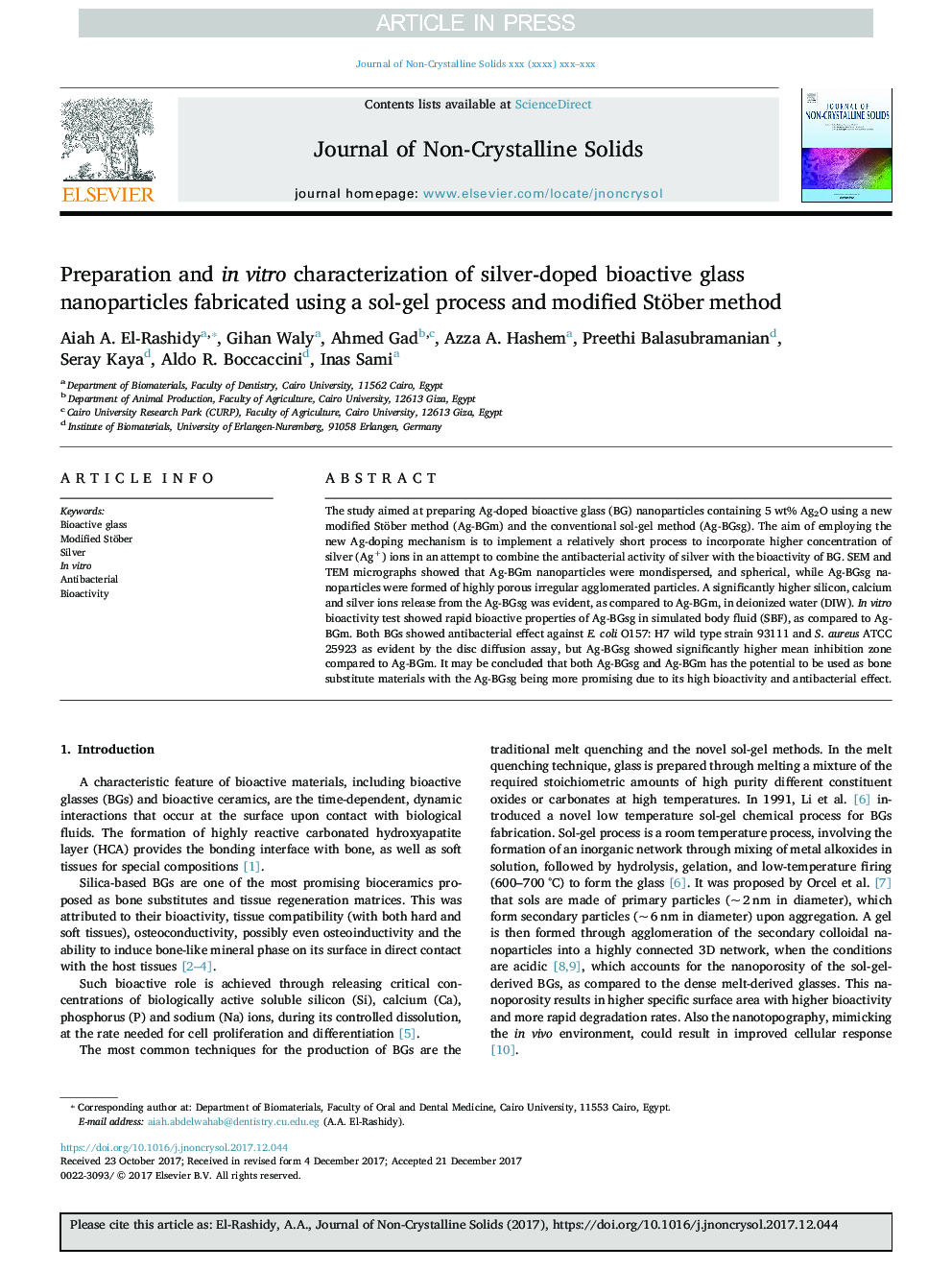| Article ID | Journal | Published Year | Pages | File Type |
|---|---|---|---|---|
| 7900128 | Journal of Non-Crystalline Solids | 2018 | 11 Pages |
Abstract
The study aimed at preparing Ag-doped bioactive glass (BG) nanoparticles containing 5Â wt% Ag2O using a new modified Stöber method (Ag-BGm) and the conventional sol-gel method (Ag-BGsg). The aim of employing the new Ag-doping mechanism is to implement a relatively short process to incorporate higher concentration of silver (Ag+) ions in an attempt to combine the antibacterial activity of silver with the bioactivity of BG. SEM and TEM micrographs showed that Ag-BGm nanoparticles were mondispersed, and spherical, while Ag-BGsg nanoparticles were formed of highly porous irregular agglomerated particles. A significantly higher silicon, calcium and silver ions release from the Ag-BGsg was evident, as compared to Ag-BGm, in deionized water (DIW). In vitro bioactivity test showed rapid bioactive properties of Ag-BGsg in simulated body fluid (SBF), as compared to Ag-BGm. Both BGs showed antibacterial effect against E. coli O157: H7 wild type strain 93111 and S. aureus ATCC 25923 as evident by the disc diffusion assay, but Ag-BGsg showed significantly higher mean inhibition zone compared to Ag-BGm. It may be concluded that both Ag-BGsg and Ag-BGm has the potential to be used as bone substitute materials with the Ag-BGsg being more promising due to its high bioactivity and antibacterial effect.
Related Topics
Physical Sciences and Engineering
Materials Science
Ceramics and Composites
Authors
Aiah A. El-Rashidy, Gihan Waly, Ahmed Gad, Azza A. Hashem, Preethi Balasubramanian, Seray Kaya, Aldo R. Boccaccini, Inas Sami,
